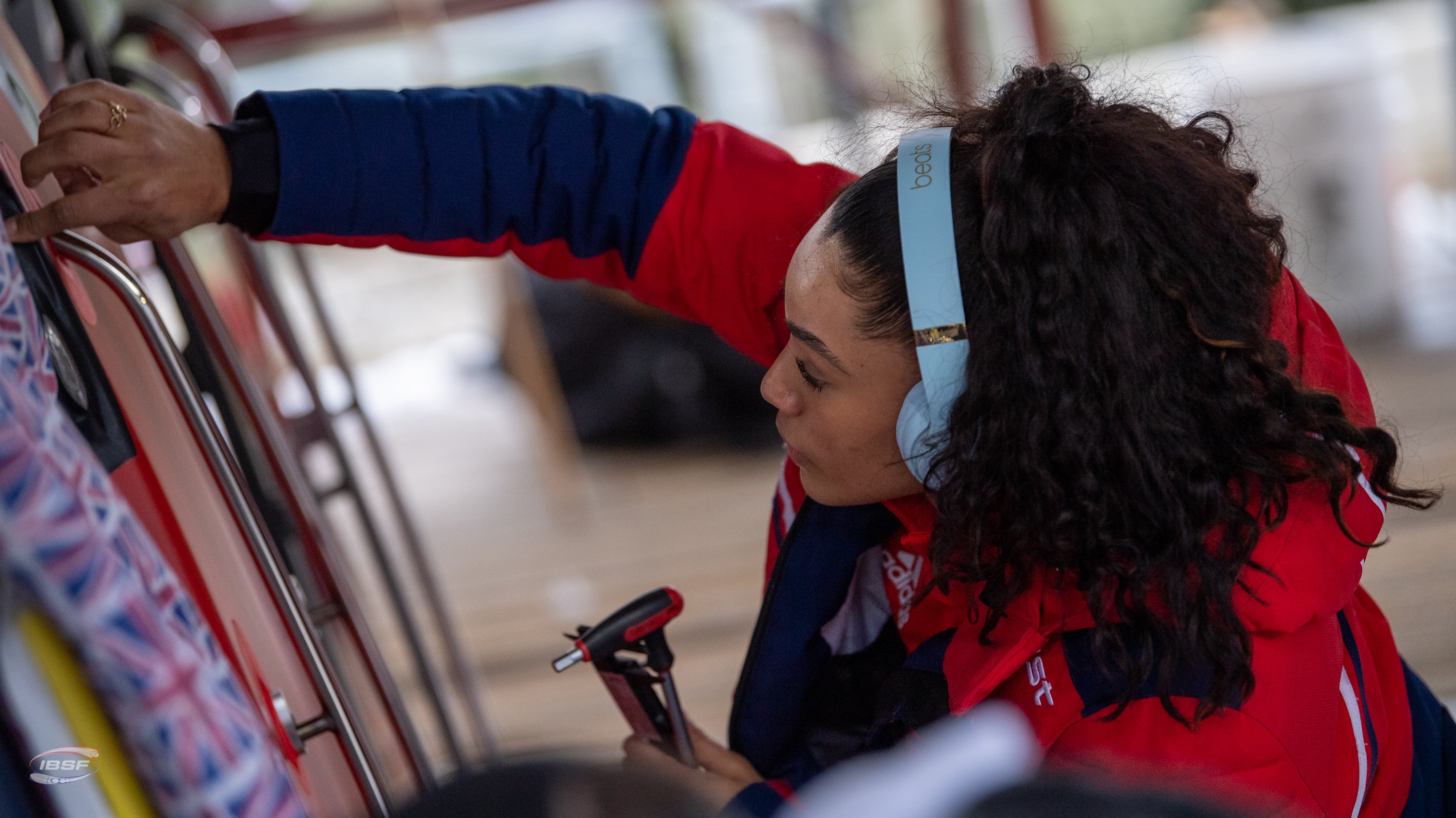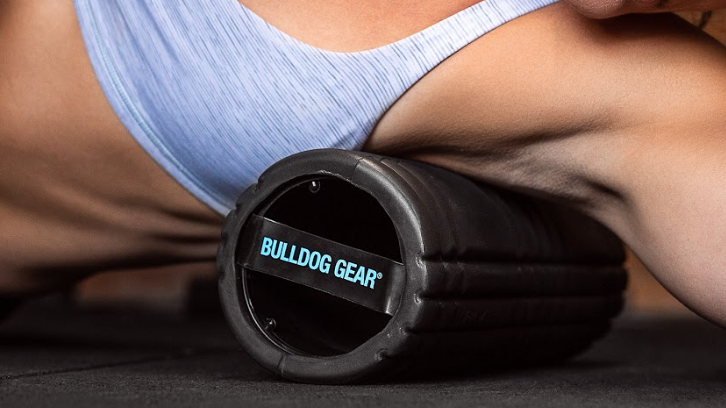
Georgie, also known as ‘The Hench Yogi’, has worked continuously as a PT, Yoga Teacher, Movement Coach and Calisthenics Coach, whilst previously being a CrossFit Box owner and coach (CrossFit L2). Her extensive experience over the past 8 years has allowed her to establish a well respected profile within movement and mobility. This expertise will guide us monthly through the regressions and progressions between twelve fundamental bodyweight movements of fitness.
I wasn’t particularly active when I was younger in terms of sports but I was always outdoors as a child. In my teens I discovered contemporary dance, studied performing arts and whilst travelling at 18, I began enjoying extreme sports such as surfing and snowboarding. I eventually ended up beginning my career as a mobile Personal Trainer in addition to running occasional boot camps.
I later discovered CrossFit and completed my Level 1 & 2 along with my 200 hour Yoga Teacher Certification. During this time I developed a real passion for human movement, focusing on improving my clients mobility, overall awareness and building a solid base strength to their training. Through CrossFit and my own independent training I found I was more mentally stimulated by being able to control my own body weight, which lead me towards calisthenics. This connected so incredibly well with my yoga practice and now my training is a dynamic hybrid of yoga, calisthenics and metabolic conditioning.
The strict base of calisthenics paired with the movement of yoga helps to condition the body. It improves strength at end ranges, working the smaller muscles, consequently preventing injury and building a sound awareness of your own body. This awareness will make you break through barriers within your own training goals. ‘Kicking people’s butts’ was never really an interest to me, although I encourage and enjoy metabolic conditioning, my main focus is how can I get my client to build a solid awareness of their body so when they’re outside of our PT sessions they move with awareness, ease and enjoy themselves.
I hope to offer a platform which will encourage more people from a broader picture across different training backgrounds to come together and improve on the three aspects of any training that are extremely important:

Inspiring others to move in as many ways as possible, try new sports and see what they’re capable of is what I strive to do, but I also want to maintain this focus on training a solid base of strength and mobility, allowing people to have the availability and knowledge to safeguard themselves in order to live life and train to their fullest potential.

It’s the ultimate goal for so many, but the variations available and how to go about achieving or improving the humble pull-up tends to go unknown, misinterpreted or completely avoided. Within this first article we’re going to touch down on developing the pull-up through progressions and regressions, which will set the foundation for more advanced movements, like strict muscle ups.
I’ve kept it simple and broken it down to five different variations that, with some work and patience, will ensure you achieve your first strict pull up, or maybe turn that 1 or 2 into sets of 5 or even 10.

First of all, you need to build the basics. The basics not only help you get that first pull-up, but they are vital in building base conditioning and should be practiced, even if you already have strict pull-ups.
- Work on your grip strength by building up some decent hanging time, change it up with different variations of grip and widths. Not only is hanging great for the whole body but good grip is vital for the pull-up. I remember my first day in the gym on a pull-up bar and could barely hang for 15 seconds.
- Work through passive and active hangs. Not only will these ‘Lat Activations’ warm up the initial pull for your pull up but it will also build strength at the very start of the movement, where so many struggle to feel the first part of their pull.
- Finally another really important component is being able to get your chin over the bar at the top. We need to develop a decent amount of static strength at the top. A great exercise to ensure you get through the full range of movement in your first pull up is to work some isometric holds with your chin over the bar. You can do these with your toes or legs resting on a box to alleviate some of the pressure. Too easy? Challenge yourself further by increasing time under tension or even adding weight by wearing a weight vest or holding a dumbbell between your feet.
To challenge yourself with other variations of hanging which are fun and build solid shoulders have a go at monkeying about the rig and a favourite of mine - The Ape Swing. The great thing about hanging is you can make it really fun, so go and play!


You can build strength through the full range of movement with the Negative Pull-Up. Start standing on a plyometric box with your chin over the bar. Hang from there and slowly lower down for 3-5 seconds until you reach the bottom. Make sure you keep a Hollow Body throughout the movement.
Increase the time under tension by slowing down the descent or with occasional pauses to level up. We can also add additional weight to make it harder. Alternatively, you can work towards building the strength in negatives by lightly supporting your toes on the box. Negatives will not only get you that first pull up, but also help increase volume.
Mix up grips, width and play with variety - Get out of the habit of only ever training movements in one set position when we have so much more available to us.


When we think of weightlifting we increase our maxes and work volume on the barbell by working at percentages of our max effort. Think of bands in the same way for your strict strength work. The banded pull-up not only teaches you the full movement pattern (for some this is what’s holding them back, due to only ever doing ring rows and not understanding what a pull-up should feel like) but also helps to build more volume in your pull-ups.
The bands will also help you to develop more explosive pulling power, which is key to achieving other movements, such as muscle-ups in the future. It’s Important to not solely use banded pull-ups and always build the strict base with negatives, isometric holds and hangs too. Variation is key.
Attach the band to a pull-up bar (stand on a box), stretch the band down and step one foot into the band. Lower yourself down into the bottom position, and pull up. Resistance bands have different colours for different levels of resistance. Green being the thickest, and therefore giving the most assistance; red being the thinnest and giving the least assistance. Feel free to experiment and test your strength with different resistance bands or even mix bands, for example a purple band might seem too easy, but a black band is too hard, however, you can use both a black and a red band together to find that middle ground.


Ring Rows also offer a rich range of variety for upper body strength training. Gym Rings are a favourite of mine, simple, versatile and portable - you can literally hook them up anywhere!
If you’ve never done these before, start by setting up your rings at chest height, shoulder width apart. Grip the rings, place your feet on the floor under the rings and lean back, until your arms are extended and you’re holding your weight. Once in this position, pull the rings towards your chest, elevating yourself from the previous position. Be sure to set the shoulder in a stable position before you pull to avoid leading with the hips, arching the back or sinking the bum to the floor. A hollow body will ensure this is done correctly.
Ensure full retraction at the top of the ring row by pulling the rings to the chest. If we don’t pull on the rings through the full range of motion, then when we get to the pull-up, we will likely struggle with the full range there too.
Challenge your ability by walking the feet forwards, this horizontal stance creates more intensity. To add further difficulty, start to invert your body by raising your feet on top of a box or stacked bumper plates. You can add also additional weight to progress further.

You can try many variations of this, making it easier or harder depending on what aspect you’re focusing on. This particular tempo focuses more on the isometric hold at the top of the pull while building strength in the negative (lower) phase, which will help if you currently can’t lower yourself with control during a full negative.


This variation is a great way to feel the movement while taking some of your body weight out of the equation. I love these because we can still control time under tension, add in static holds and also work volume.
Set a barbell up in a squat rack and place a box or bench out in front. Make sure you are positioned under the bar and the legs out in front on the bench.
Play around with grip too; wide, narrow, mixed, underhand etc.


You may be competent at pull ups, however adding additional weight can be used to develop pulling strength beyond bodyweight, improve overall volume in addition to increasing power output and speed. You can add weight using a Dip Belt, Weight Vest or by holding a Dumbbell between your feet - whichever weighted object is chosen, the outcome is evidently the same.




Focus on the movement pattern and how it feels. We want a full range of motion from the bottom to the top and back down. Don’t fight out bad reps for the sake of numbers. If it feels good, it is good, if it feels bad, it is bad. Your body is always giving you feedback and it’s down to you to listen.

Prep the body correctly pre-training, take time to listen and feel what’s going on. There are lots of ways to open the body up before you start your session to ensure the range of motion required is ready. Some days we can feel on fire and ready to hit a big session, other days our body needs us to take a break. I always use these days as a great excuse to mobilise. By practising mobility, you will improve your overall range of motion and strength. It’ll make movements you wish to achieve accessible if your body is able to move in the way it’s required to.

Building strength takes time. Don’t always try and max out a set of pull ups to failure, you wouldn’t go to the gym and try to hit a PR deadlift every time. Instead, use these tools to condition the movement. As mentioned before, variation is key, so differ between speed work, time under tension, grips and weight.







Comments
Great article. Keep them coming!